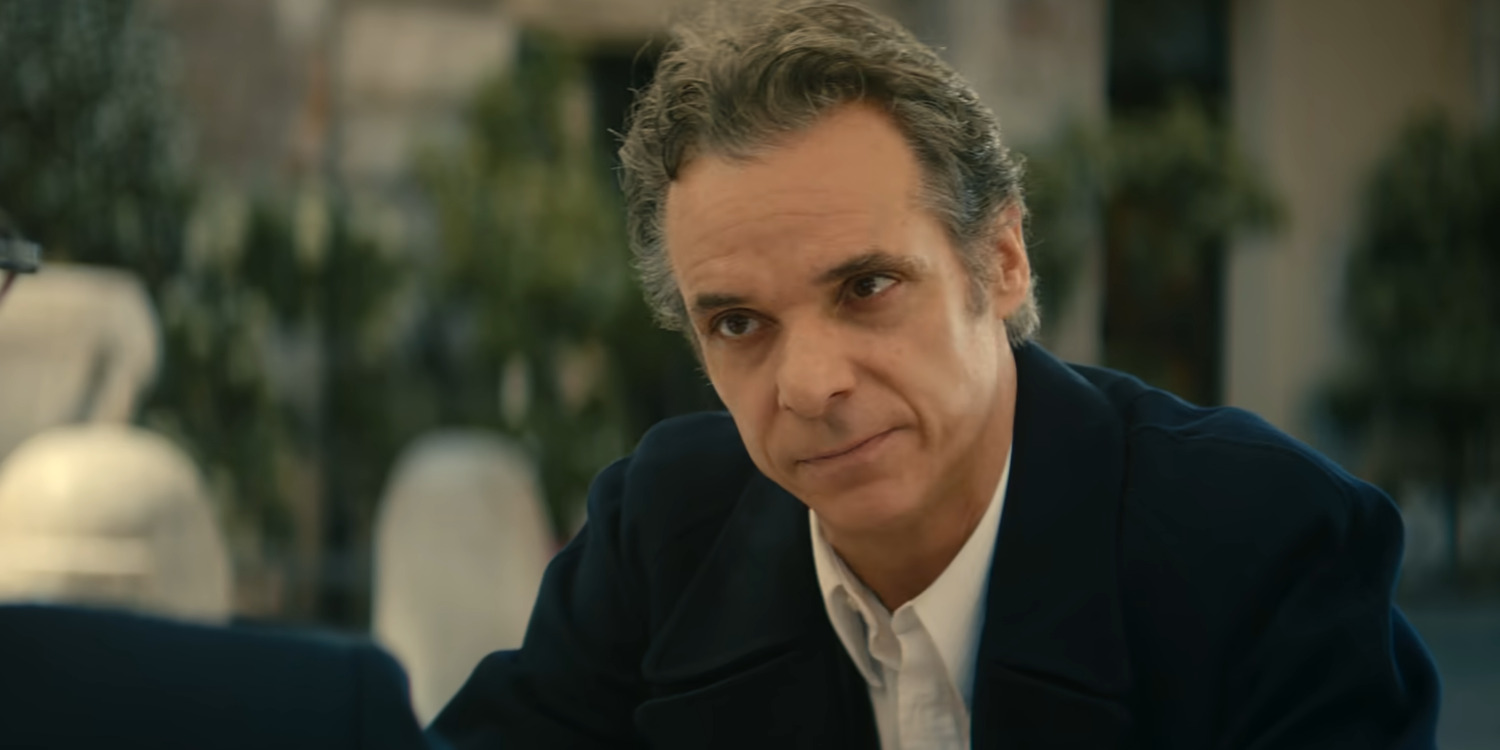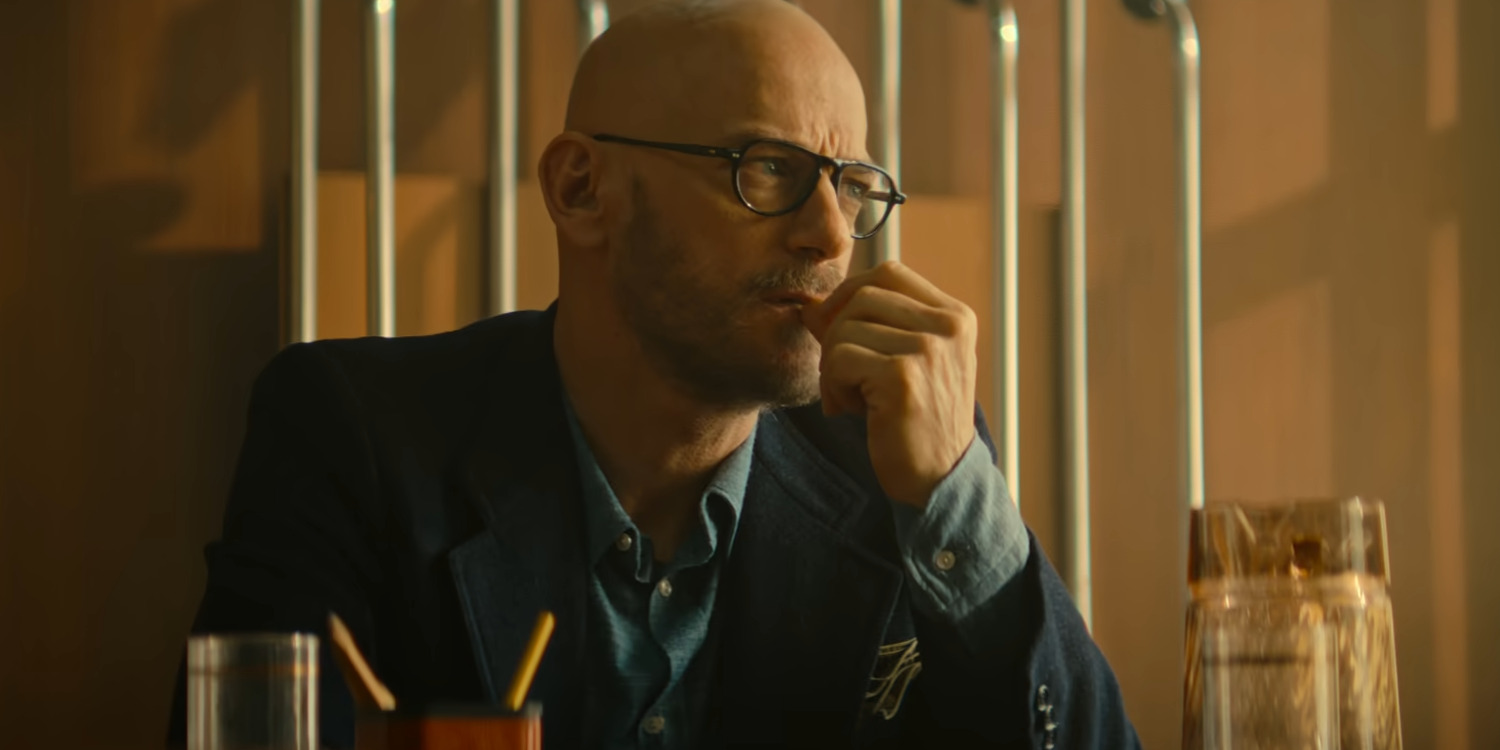The Netflix series’ Mrs Playmen’ transports viewers to 1970s Italy, where a new editorial empire is on the rise. Saro Balsamo’s erotic magazine ‘Playmen’ has reached new heights, cultivating a certain reputation for itself in the culture. However, with such scandalous notoriety also comes unwanted attention from the conservative anti-pornography laws of the country. Adding the same to Saro’s less-than-scot-free record creates a recipe for disaster. For the same reason, the businessman ends up fleeing from the country, leaving ‘Playmen’ in its increasingly vulnerable state to his wife, Adelina Tattilo. Yet, despite the near-impossible challenges, the editor-in-chief rises to the occasion, reinventing the magazine with a new and powerful vision. In this quest, she finds notable camaraderie in Mario Chartroux, who goes on to become the publication’s creative director.
Saro Balsamo is Inspired by Adelina Tattilo’s Real Ex-Husband
The real Adelina Tattilo, founder and publisher of the Italian ‘Playmen’ magazine, is the source of inspiration behind ‘Mrs Playment.’ As a result, major beats, both professional and personal, from the pioneering publisher’s life are employed in the on-screen dramatization. Her relationship with Saro Balsamo, her ex-husband, is no exception. The real-life counterpart of the character, the real Saro Balsamo, and Tattilo tied the marital knot at a young age. The pair grew up in the same neighborhood, which paved the way for a young romance shared through the windows of their nearby houses.

Reportedly, Balsamo was a year and a half younger than his partner. Eventually, the couple got married and went on to have three children, Fabrizio, Roberto, and Manuela. Furthermore, Balsamo and Tattilo also remained collaborators in their professional endeavors. They launched and maintained various editorial efforts, including the erotic comic strip ‘Menelik,’ an erotic magazine ‘Men,’ and another publication, ‘Big,’ targeted toward a more male teenage audience. Eventually, the couple founded the magazine ‘Playmen’ in 1967. However, in the early years, Balsamo ended up abandoning his wife and the business after facing financial ruin of his estate and the rising editorial empire he and Tattilo had created.
In the face of his abandonment, Tattilo rose to the occasion, took charge of the publication, and brought it to newer, previously untouched heights. Eventually, the couple’s marriage ended in a divorce, and Tattilo continued to remain at the helm of the publication. Thus, there are prominent similarities between the on-screen portrayal of Saro Balsamo and his real-life counterpart. Yet, it’s important to note that the intricacy of the interpersonal dynamics between the on-screen couple and Saro’s characterization retains a level of creative liberty and fictionalization. Notably, it’s difficult to obtain any official records that allude to the possibility of physical, domestic violence occurring between the couple, prior to their divorce.
Luciano Oppo was the First Editor-in-Chief and Director of Playmen
Although ‘Mrs Playmen’ farms a significant amount of inspiration for its storylines and characters from direct real-life counterparts, it also dabbles in the occasional fictionalization. The character of Mario Chartroux is a prime example of the same. In the story, he serves as one of Adelina’s prominent allies who helps her actualize her revolutionary vision for her erotic magazine. However, in real life, there are no reports showcasing the existence of a similarly named individual in connection with the history of the Italian magazine. Instead, Luciano Oppo fulfilled a similar professional role within the publication of ‘Playmen.’ Oppo was the son of painter Cipriano Esifio Oppo, who is known for being the founder of the Quadrennial.

Luciano Oppo collaborated with Adelina Tattilo in the 1970s, occupying an editorial role in the creation of ‘Playmen.’ He served as both the editor-in-chief as well as the director of the magazine. Notably, Tattilo and her magazine’s exceptional success was credited to her ability to surround herself with visionary creative personalities who helped her achieve her vision for the publication. Therefore, Oppo’s contribution would have significantly influenced the culturally prominent impact of ‘Playmen.’ As such, there seems to be intentional parallels between Oppo and the character of Chartroux. Yet, ‘Mrs Playmen’ delves deeper into the latter’s characterization, shaping him into a fully actualized and fleshed out individual. In doing so, it largely fictionalizes events, relationships, and personality traits that have no direct relation to Oppo, the actual editor-in-chief and director of ‘Playmen.’
Read More: Is Luigi Poggi Based on a Real Playmen Photographer?


